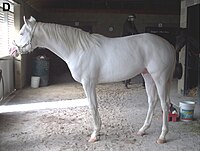
The effects of fatigue on knee kinematics during unanticipated change of direction in adolescent girl athletes: a comparison between dominant and non-dominant legs.
Sign Up to like & getrecommendations! Published in 2021 at "Sports biomechanics"
DOI: 10.1080/14763141.2021.1925732
Abstract: This study was aimed to compare the knee kinematic parameters between dominant and non-dominant legs of adolescent female athletes during change of direction (CoD) in fatigued and unpredictable settings. Knee kinematic parameters on 49 athletes… read more here.
Keywords: dominant legs; dominant non; change direction; non dominant ... See more keywords

Does the amplitude of biceps brachii M waves increase similarly in both limbs during staircase, electrically elicited contractions?
Sign Up to like & getrecommendations! Published in 2018 at "Physiological measurement"
DOI: 10.1088/1361-6579/aad57c
Abstract: OBJECTIVE Humans usually tend to control more finely muscle force production in dominant than non-dominant upper limbs. It is well established that motor unit recruitment is a key mechanism by which muscle force is controlled,… read more here.
Keywords: wave amplitude; biceps brachii; dominant non; non dominant ... See more keywords

OR28-3 A Mutation in KCNK16 Segregating with Autosomal Dominant Non-Ketotic Diabetes Drastically Increases TALK-1 Membrane Current: A Novel Gene for MODY?
Sign Up to like & getrecommendations! Published in 2019 at "Journal of the Endocrine Society"
DOI: 10.1210/js.2019-or28-3
Abstract: Abstract Maturity-onset diabetes of the young (MODY) is a monogenic form of diabetes. Exome sequencing of a non-obese four-generation family with autosomal dominant non-ketotic antibody-negative diabetes, who were negative for mutations in known MODY genes,… read more here.
Keywords: talk; non ketotic; kcnk16; dominant non ... See more keywords

Myotendinous asymmetries derived from the prolonged practice of badminton in professional players
Sign Up to like & getrecommendations! Published in 2019 at "PLoS ONE"
DOI: 10.1371/journal.pone.0222190
Abstract: Background The continued practice of a sport linked to the unilateral predominance of the dominant side can provoke chronic asymmetric adaptations in the myotendinous structure and mechanical properties. Objectives: The main purpose was to determine… read more here.
Keywords: lower limb; practice; muscle architecture; dominant non ... See more keywords

Kinematic Comparisons of Increased Exercise Repetitions and Intensities on the Dominant and Non-Dominant Upper Limbs for Prevention of Dyskinesia
Sign Up to like & getrecommendations! Published in 2020 at "Iranian Journal of Public Health"
DOI: 10.18502/ijph.v49i10.4690
Abstract: Background: Increased exercise repetitions and intensities need to be compared between dominant and non-dominant sides to prevent asymmetrically conducted movements for possible dyskinesia. Methods: A total of 20 participants were enrolled from Inha University, Incheon,… read more here.
Keywords: dominant non; exercise repetitions; non dominant; increased exercise ... See more keywords

Autosomal Dominant Non-Syndromic Hearing Loss (DFNA): A Comprehensive Narrative Review
Sign Up to like & getrecommendations! Published in 2023 at "Biomedicines"
DOI: 10.3390/biomedicines11061616
Abstract: Autosomal dominant non-syndromic hearing loss (HL) typically occurs when only one dominant allele within the disease gene is sufficient to express the phenotype. Therefore, most patients diagnosed with autosomal dominant non-syndromic HL have a hearing-impaired… read more here.
Keywords: non syndromic; autosomal dominant; dominant non; gene ... See more keywords